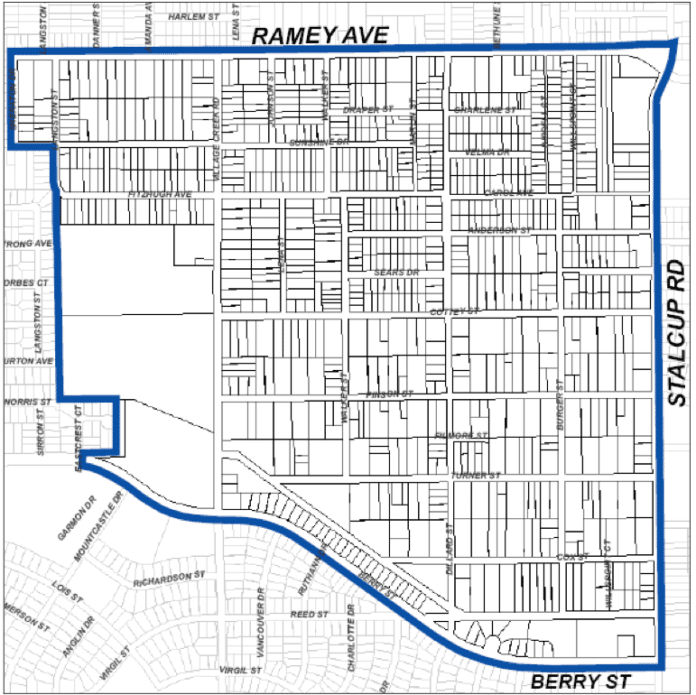The historic district boundary in the Stop Six neighborhood may be getting a makeover.
City councilwoman Gyna Bivens, whose district includes the Stop Six neighborhood in southeast Fort Worth, is leading an effort to restructure the boundaries of the historic district in hopes of attracting more developers to the area.
The Historic and Cultural Landmarks Commission heard a briefing on the district Monday and will continue discussion with Bivens on what the new boundaries may look like. The city will consider redrawing the boundary or drawing several small boundaries to create a “discontiguous” district, said Liz Casso, the city’s historic preservation officer.
There is no definite timetable as to how long discussion will last or when the city council will vote on the matter, Casso said.
Formally named Historic Stop Six: Sunrise Edition, the 392-acre district roughly encompasses Ramey Avenue on the north, Stalcup Road on the east, Berry Street on the south and Langston Street on the west. The area is known as “Stop Six” because it once had the sixth stop of the Dallas-Fort Worth Interurban train line of the early 1900s.
Currently, any new development in the district must follow a set of written guidelines that govern design elements like building materials, signage and landscaping among other things. The Landmarks Commission is responsible for reviewing development plans and granting developers approval for new projects.
However, Bivens said the historic district discourages development.
“When I talk to developers, they tell me that we don’t mind developing in this community, but with these restrictions, plus the lack of good school performance, it just makes it not so worthwhile,” she said.
Since the district was created in 2007, Casso said little development has come into the area, and most of the cases that she sees are demolition requests.
“Most historic districts see an increase in property values. Over time, you see a pickup in properties getting rehabbed and infill going in,” she said. “It’s like a domino effect. All of a sudden it just starts to really take off. I see this trend in almost all of the districts that I’ve worked with, but Stop Six has not seen it.”
Many of Stop Six’s residents didn’t support the district in the first place, Bivens said.
Typically, property owners petition the city council to adopt a historic boundary, but in the case of the Stop Six district, it was the other way around – the city council proposed the boundary, Casso said.
Before the district was created, the city collected signatures from property owners who were either against or in favor of the district. According to Casso, 146 property owners supported the district, while 832 property owners were against the district. Despite the opposition, the city council voted to create the district.
Since the district didn’t come as a result of public petition, the Stop Six district lacked “investment in the community,” Casso said.
“There wasn’t that grassroots movement,” she said. “It hadn’t been asked for by the neighborhood.”
Because of the lack of public support, Bivens said back in February that she’d like to see the historic district removed altogether and have property owners apply for historic designations on individual properties if they want to.
But rather than removing the district, the city may redraw the boundaries instead.
Part of the reason for restructuring the district is that much of the land is vacant, Bivens said.
According to Casso, who surveyed the area’s historic properties last October, about 32 percent of the buildings in the district are considered “contributing historic structures” – that is, structures built between the early to mid-twentieth century that did not receive any significant alterations over time. Thus, 68 percent of the area is either non-contributing structures or vacant land.
Not only that, Casso said many of the remaining historic structures don’t follow a uniform design – some follow the “ranch-style” designs of the 1950s and 60s, some follow the “minimal traditional” style of the 1930s and others follow various architectural designs from different decades.
“It’s just a hodge podge,” Bivens said.
The redrawn boundaries are yet to be seen, but Bivens, who has long called for redevelopment in the Stop Six neighborhood, said she hopes lighter restrictions will encourage developers to work in the district.
“We want to make sure that people who appreciate that designation will have that opportunity to be designated,” she said. “But the other people who have been burdened by this will be able to be free and develop.”






